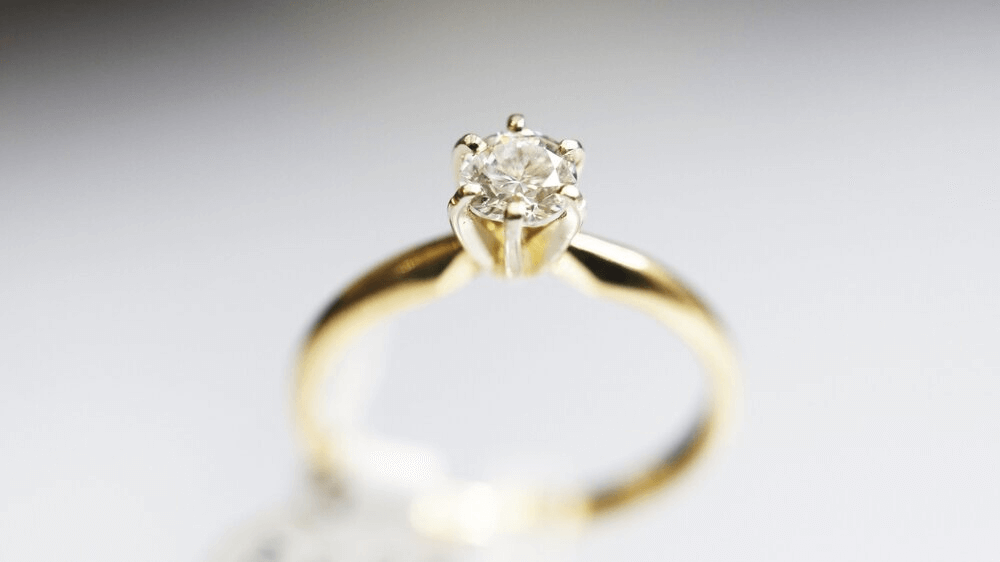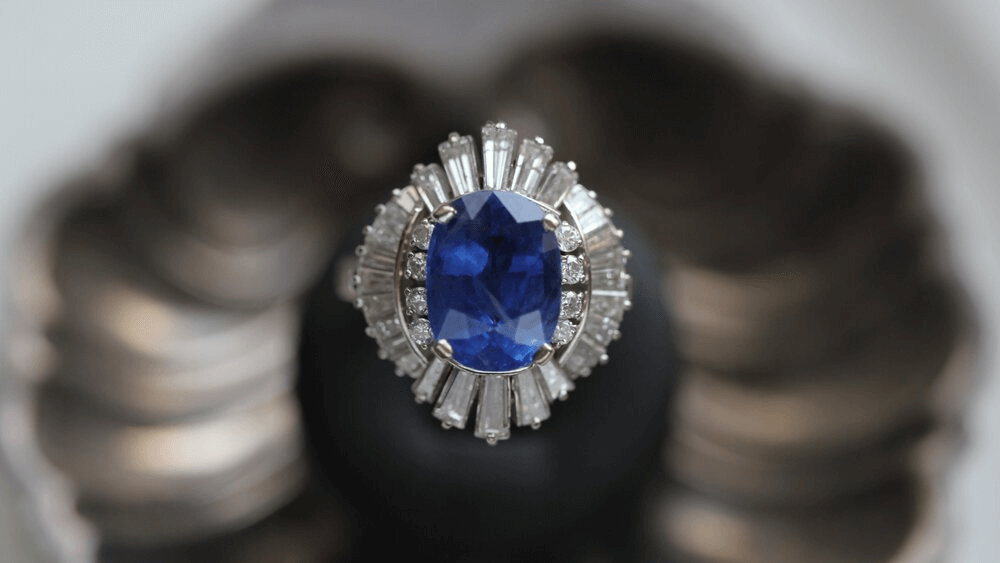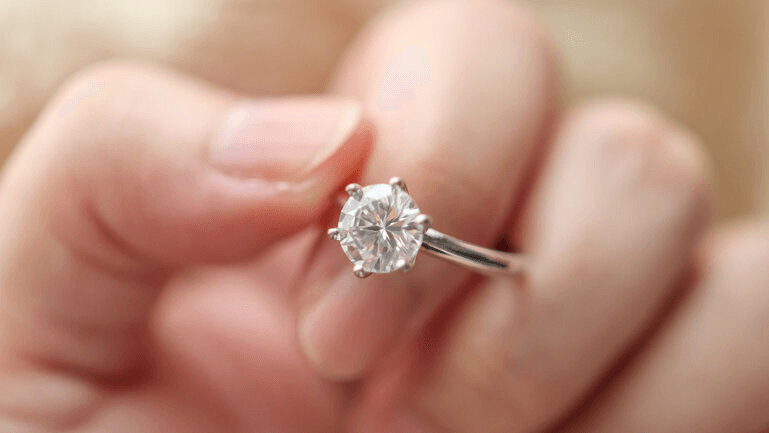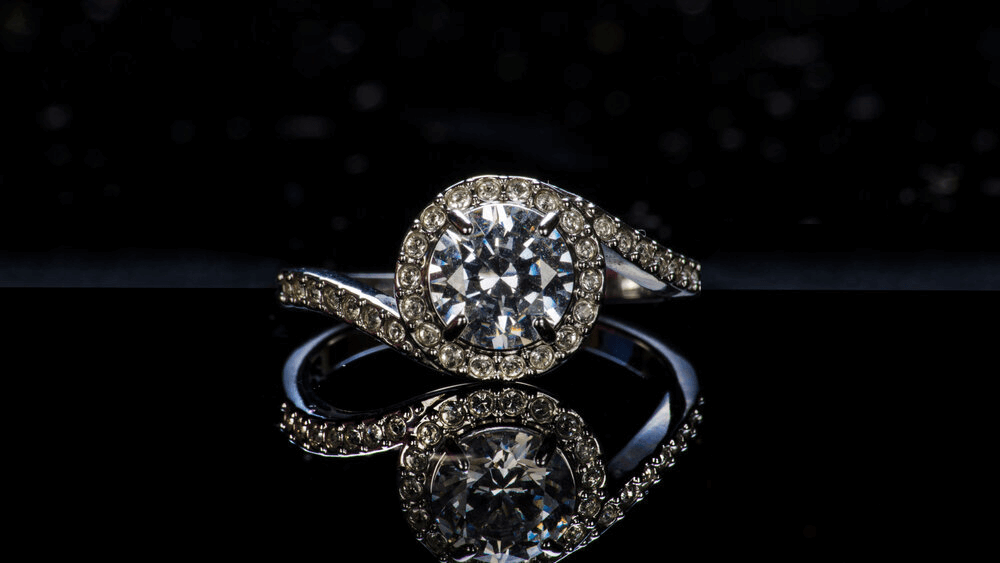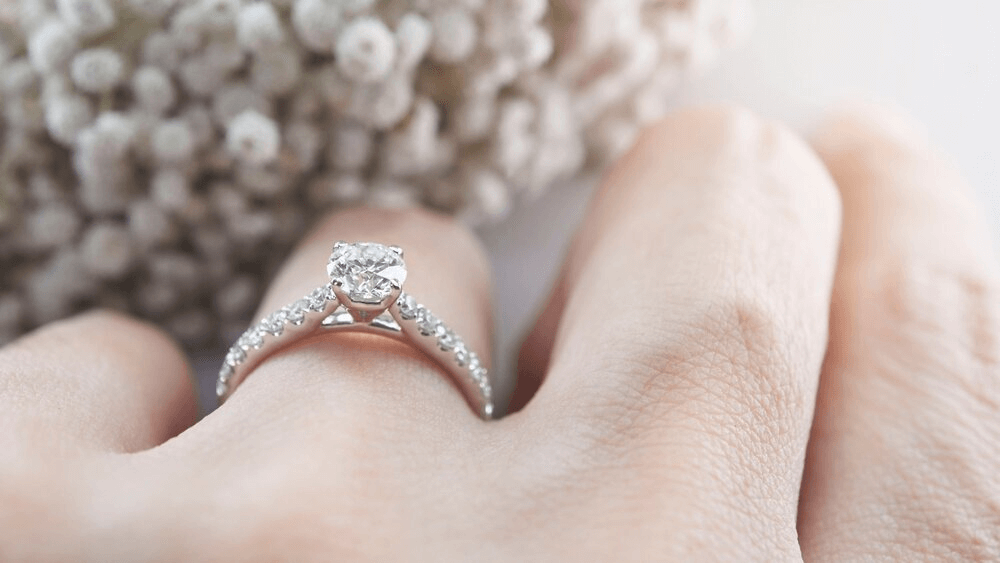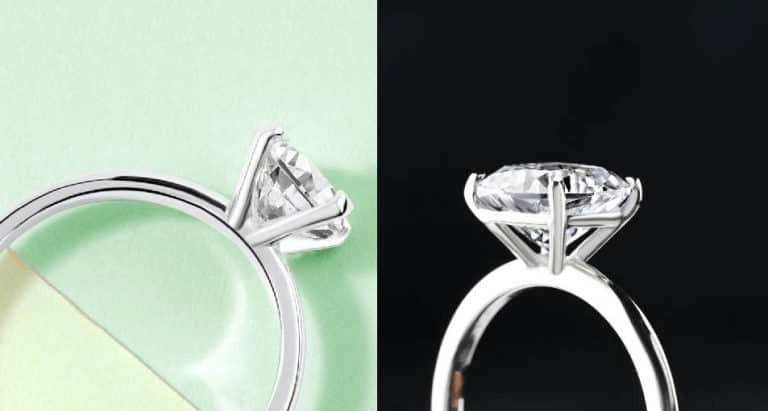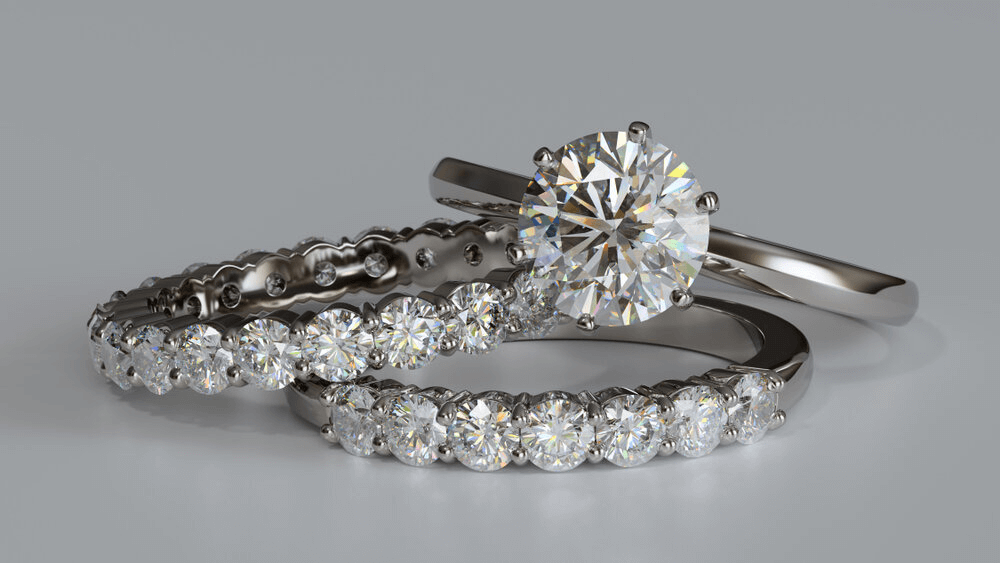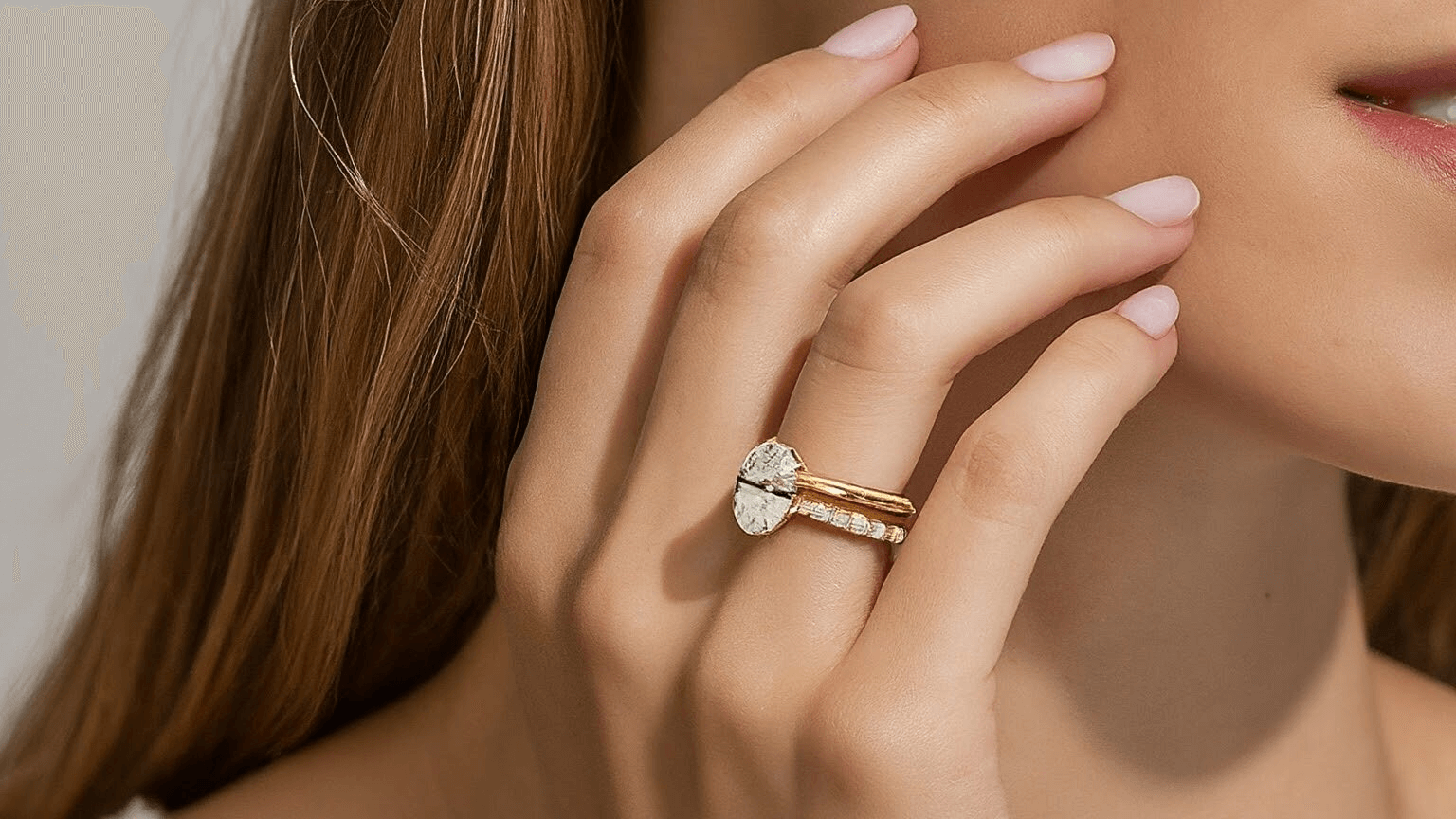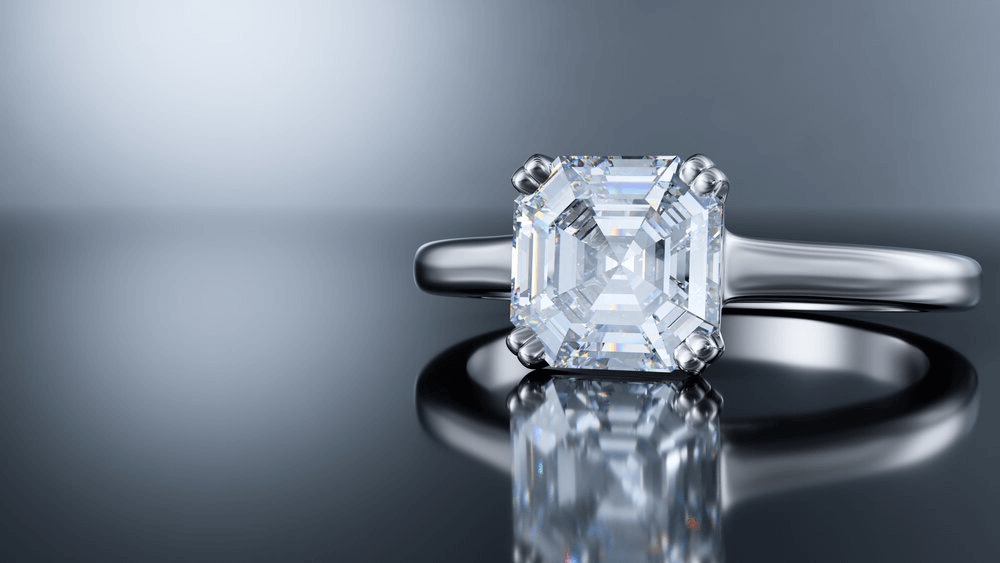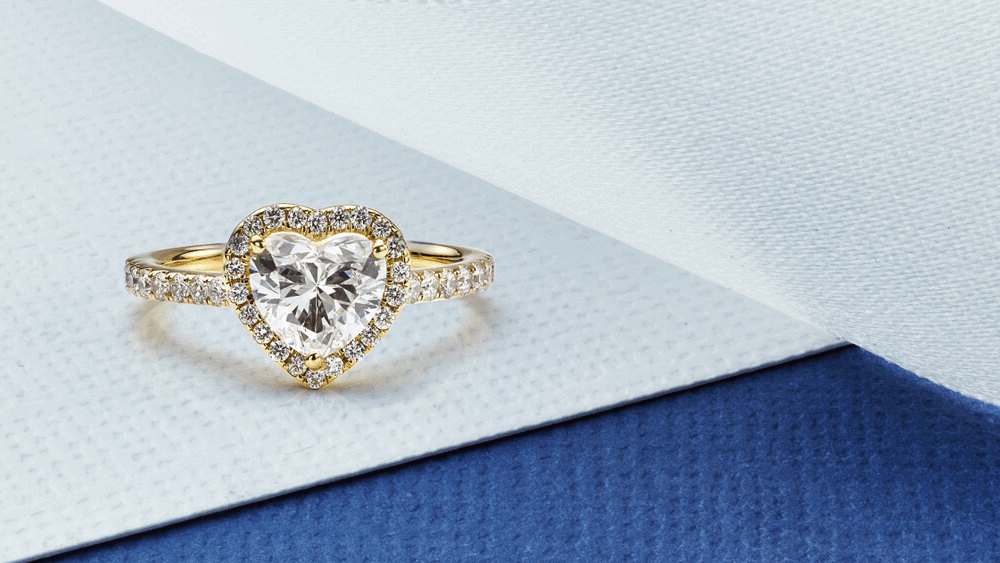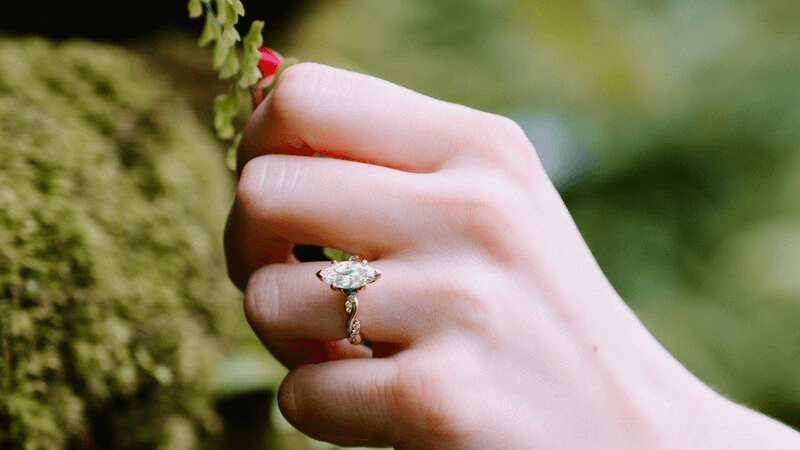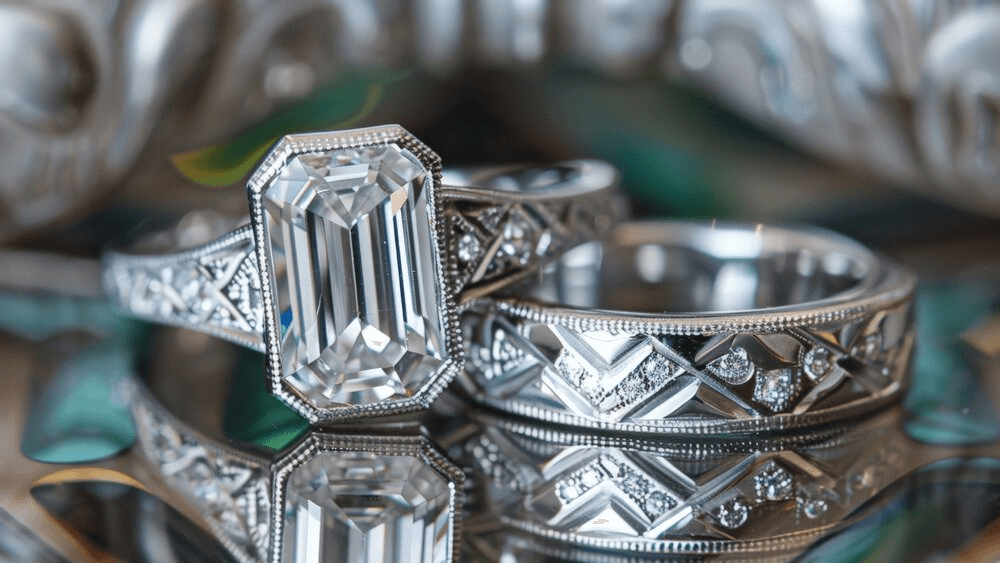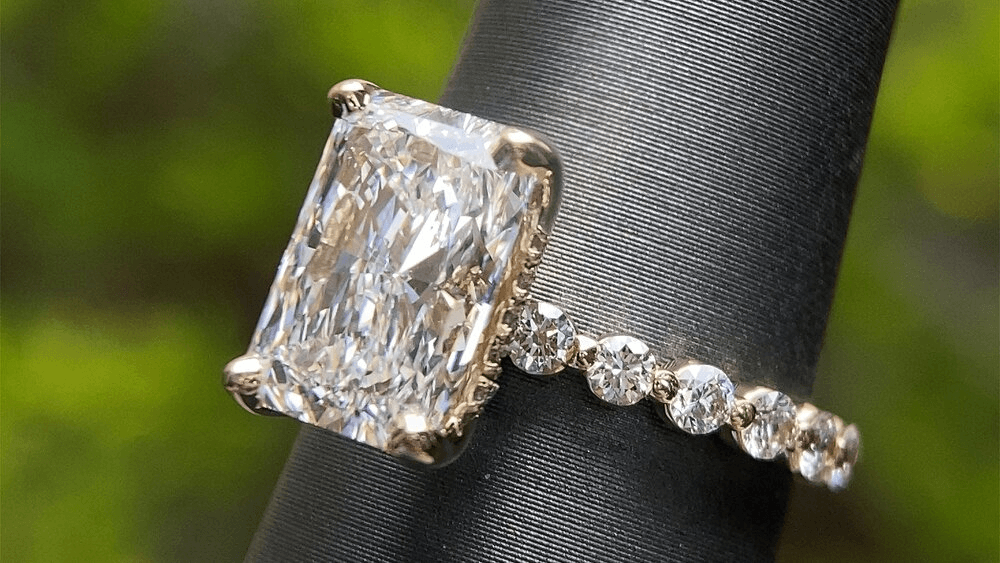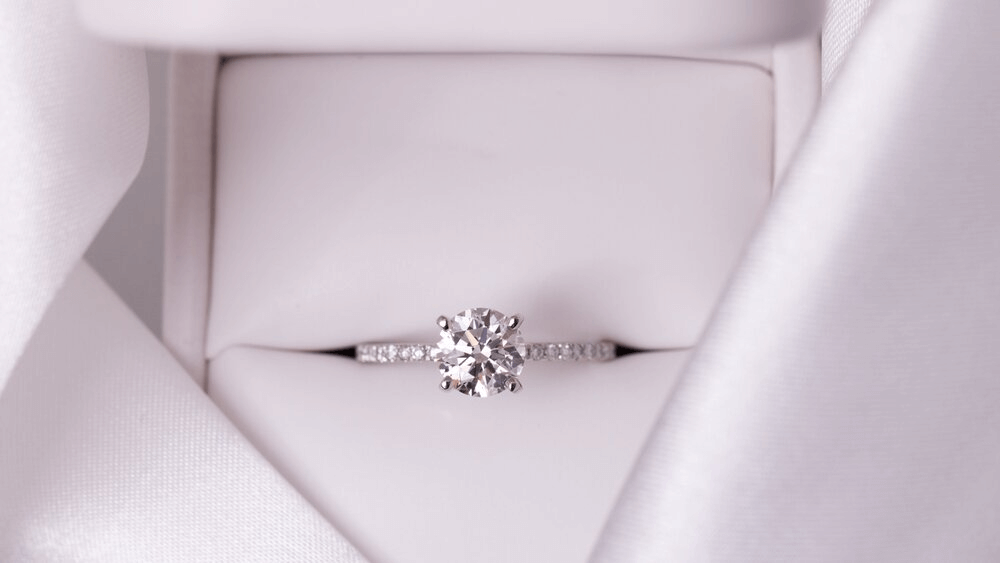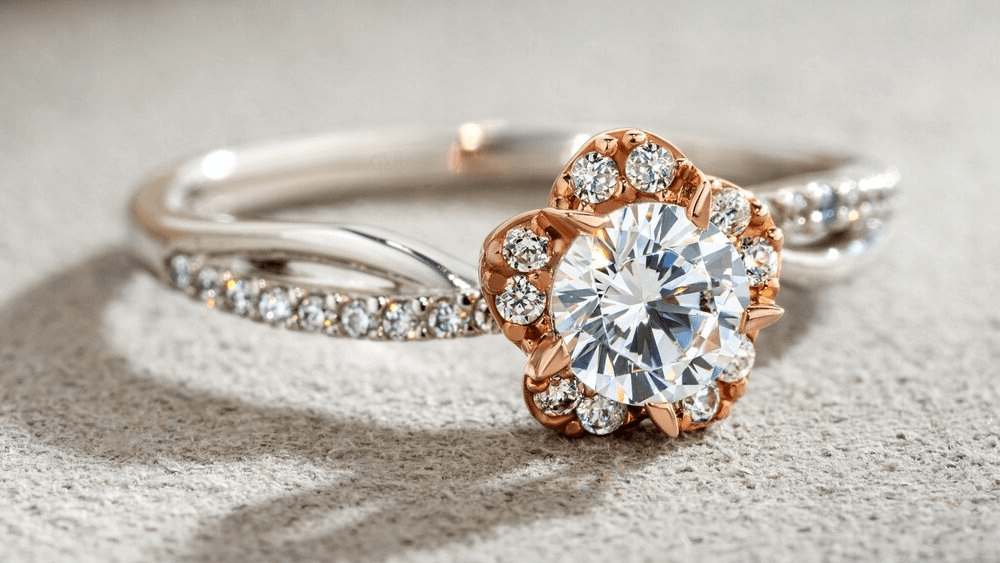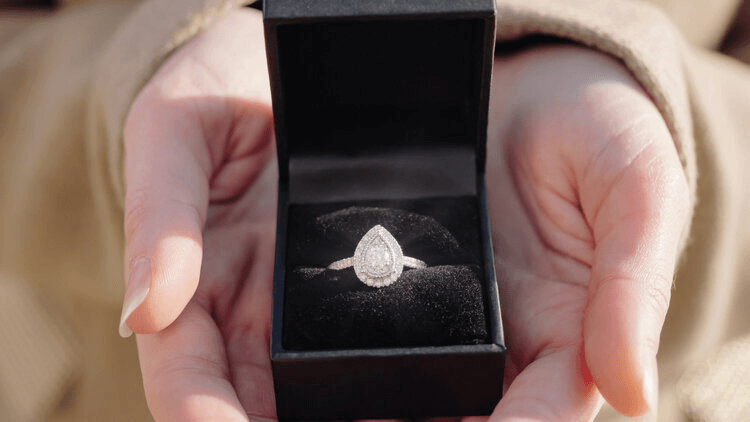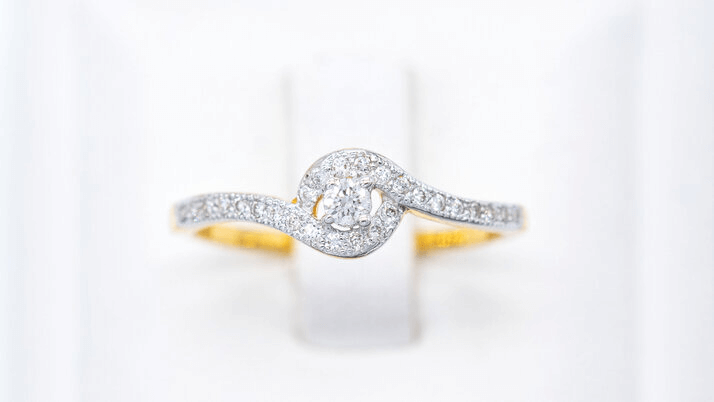Essential Guide to Engagement Ring Settings: What You Need to Know!

By Gary A.

Edited by Olivia H.
Published Aug 20, 2021
Edited on Dec 18, 2024
The right engagement ring settings can transform a simple diamond into a breathtaking symbol of love, elevating both its brilliance and your special moment.

Navigate This Guide:
- 7 Quick Tips for Choosing Diamond Engagement Ring Settings
- Introduction
- The Basics of Engagement Rings Settings
- Understanding Different Ring Settings
- Artisanal Craftsmanship and Custom Designs
- The Practicalities of Ring Selection
- Maximizing Sparkle: Choosing the Right Setting for Your Diamond
- Choosing Between Gold, Platinum and Other Metals
- Discovering Your Ideal Ring Style
- Our Expert Take
- 10 FAQs
Before we dive deeper into the specifics, here are some practical tips to help guide your decision-making process:
7 Quick Tips for Choosing Diamond Engagement Ring Settings
When selecting a diamond engagement ring, the setting is as crucial as the diamond itself. It’s the stage that showcases the beauty of the diamond and reflects the wearer’s style. Here are practical tips to consider:
- Tip 1: Consider the Daily Lifestyle: The ring setting should match the wearer’s daily activities. For example, a bezel setting, which encloses the diamond with a metal rim, is ideal for active lifestyles as it provides more protection and is less likely to snag on clothing.
- Tip 2: Balance Between Security and Style: Check how securely the setting holds the diamond. Prong settings are popular but require checking for loose prongs over time. A setting with more metal around the diamond, like a bezel or channel setting, can offer better protection.
- Tip 3: Understand the Impact on Diamond’s Appearance: Different settings can affect how the diamond looks. A halo setting can make the center stone appear larger, while a high setting can allow more light into the diamond, increasing its brilliance.
- Tip 4: Factor in Maintenance Requirements: Some settings require more upkeep than others. Intricate designs with multiple stones may need more frequent cleaning and care, while simpler settings like a solitaire can be easier to maintain.
- Tip 5: Evaluate the Metal Choices: The color and durability of the metal are important. Platinum is durable and doesn’t tarnish easily, while gold comes in various colors (white, yellow, rose) and can complement different skin tones and diamond colors.
- Tip 6: Decide on Customization: If you’re looking for something unique, explore custom-made settings. This allows for personalization according to individual taste, potentially creating a one-of-a-kind piece.
- Tip 7: Plan for Future Adjustments: Consider the ease of resizing or modifying the ring in the future. Some settings, like tension settings, are more difficult to adjust than others.
Now that you’ve got these practical tips, use Jeweler AI below to find the perfect engagement ring that suits your style and budget:
Introduction
When we talk about buying an engagement ring, we’re really talking about a process of two halves: buying a diamond and buying the ring setting – AKA, the part that will actually get that diamond to sit on her finger.
How you pick each of these features depends on the other—and this can get a little confusing. We’d recommend waiting to settle on your diamond until after you’ve picked your setting – although it’s a good idea to get a rough idea in your head about what kind of diamond you want before you pick your setting.
Overwhelmed? Don’t be. Start off by getting your head around the different types of ring settings there are, then move on to experimenting with the different characteristics different diamonds bring to those settings. For instance, an Emerald Cut Halo Engagement Ring looks totally different to this one, featuring a Marquise Cut Halo – but more on that below.
The Basics of Engagement Rings Settings
For now, put your diamond checklist to one side and focus on the bigger picture. There’ll be plenty of time to work through the four Cs and buy the perfect diamond later but, for now, you’ve got to walk before you run, and work out where that diamond is going to go.
A ring setting is the metalwork surrounding the diamond, and the metal band worn on the finger. It’s there to keep the diamond safe and secure, to transform it into a wearable piece, and, of course, to look beautiful in the process.
From the strikingly simple to the sparklingly intricate, the sheer amount of choice on offer for anyone picking out a ring setting is, at first, pretty overwhelming.
Once you start getting to know these different styles, however, you’ll begin to see better just how much a ring can change with only a small modification to the setting. You’ll also start to realize that, while every setting is beautiful in its own way, only one or two will feel ‘right’ for your bride-to-be.
Understanding the anatomy of an engagement ring is essential to appreciating how the various components, such as the shank, prongs, and setting, all work together to secure and showcase the diamond while enhancing the ring’s overall beauty and structure.
The choice becomes easier as soon as you start to unravel the mystery of ‘ring settings’.

Understanding Different Ring Settings
The diamond solitaire is likely the first to come to mind when you think of an engagement ring, but the chances are that you’ll have encountered the halo setting, pavé setting, three stone setting cathedral setting and split shank at some time or another – even if you didn’t realize it at the time.
Each one makes a totally unique impression on the finger, and will subtly influence which of your chosen diamond’s qualities are made most obvious. Some can be combined together within a single design, while others stand in direct contrast to one another.
The good news is, there are no right or wrong answers to the question, ‘Which one is right for you?’ The only mistake you could make is not reviewing every one of your options…
Solitaire, Halo, and Cathedral Settings
- The Diamond Solitaire
In a Word: Classic
Characterized by a single diamond held in place by prongs, without any extra embellishment or adornment around the diamond, solitaire diamond settings bear the most traditional shape for engagement rings in many parts of the world.
Perfect for any diamond shape, and for getting the maximum light performance out of the stone since it leaves much of the top and sides of the diamond exposed to the light.
This setting is also occasionally called a ‘prong setting’, although jewelers tend to go by the name ‘diamond solitaire’.
- The Cathedral Setting
In a Word: Architectural
The cathedral setting raises the diamond high above the shank (band) of the ring using an elegant arch evocative of the architecture of the world’s most impressive cathedrals. Diamonds are usually held in place by prongs, but the cathedral can be used alongside more unusual settings, such as the bezel.
The cathedral setting may also be combined with other features – such as pavé or halo – to create a much more ornate piece, or used on their own to give more height to the traditional diamond solitaire – like this Princess Cut Cathedral Engagement Ring.
- The Halo
In a Word: Luxurious
If you’ve only ever seen a handful of engagement rings in real life before, then we’re willing to bet that at least one of them featured a halo setting.
By wrapping the diamond within a delicate line of smaller accent stones, jewelers are able to introduce a new dimension of sparkle to the ring. Halos follow the shape of the center diamond, which means that they can be circular (arguably the most common), square or rectangular, or follow one of the fancy cuts, such as the pear or marquise.
This style can comprise a single, double, or triple halo, depending on your preference.
- The Hidden Halo
In a Word: Discrete
For the more understated among us, the hidden halo adds a beautiful touch of detailing to a ring without interrupting the simple beauty of a plain diamond.
Characterized by a much smaller halo of stones placed underneath the diamond visible only from the profile of the ring, and not from any other angle, this setting is one of those finishing touches that’s hard to pass up.
It’s placement also lends a little extra sparkle to the ring, by directing light up into the diamond – an added bonus for what is already a stunning feature.
Pavé and Micro Pavé
In a Word: Sparkly
Before you say it – yes, all diamond rings will be sparkly. The pavé settings are, however, the ultimate way to get extra sparkle into a ring (especially if they’re paired with a halo).
Both pavé and micro pavé rings feature a band inset with many small diamonds, which are held in place with very fine metal prongs or beads. The effect is a shank that flashes and sparks in countless ways with every move the wearer makes – and one of the most popular engagement ring styles of the twenty-first century.
Unique Styles: Tension, Flush, and Basket Settings
- The Tension Setting
In a Word: Unforgettable
As the name would suggest, the tension setting holds the diamond in place using the opposition created intentionally between two parts of the shank. This avoids the use of prongs, bars, or a bezel (more on that below), while also creating an incredibly modern and striking piece.
This is one of those styles that you will be incapable of getting out of your head – either because you’re head over heels for it, or because you can’t quite believe something so simple is actually capable of holding that diamond securely in place.
For the slightly more cautious, tension style settings are also available. These settings mimic the shape and sleek appearance of the tension setting but secure the diamond in place using a number of prongs.
- The Flush Setting
In a Word: Rare
Yes, the bezel and the cluster setting are both pretty ‘out there’, but nothing is further out than the flush setting, which has been known to make an appearance in engagement rings and wedding bands alike.
While almost all of the types of rings settings used in engagement rings are designed to hold the diamond above the finger, and make it (or them) the key feature for the entire piece, the flush setting keeps the diamond on the same level as the setting itself.
The top of the diamond is all that’s visible here, with the rest buried in the gold or platinum of the shank.
- The Basket Setting
In a Word: Timeless
The basket setting, a timeless classic, cradles the diamond securely within a delicate framework resembling an inverted basket. This setting is a perfect harmony of form and function, providing both elegance and stability. The diamond sits snugly within the basket, allowing light to playfully dance through its facets while maintaining a secure and eye-catching presentation.
- Bypass Setting
For an elegant and unique twist, consider the bypass setting. This design features two bands that sweep around the diamond, symbolizing two paths converging as one. It’s a fantastic option for those who prefer a modern look with symbolic meaning.
- Trellis Setting
Another beautifully structured option is the trellis setting, which secures the diamond with interwoven prongs, creating a basket-like design. This classic style enhances both durability and elegance, making it a perfect choice for an engagement ring.
- Invisible Setting
The invisible setting is ideal for those who prioritize a sleek and seamless look. In this setting, the diamonds are set close together without visible prongs, creating a continuous surface of sparkle and maximizing the ring’s brilliance.
Modern vs. Vintage Engagement Ring Styles
- Vintage Engagement Rings
In a Word: Reminiscent
The term ‘vintage’ covers a long list of styles and pieces but, in this instance, it typically refers to rings that have been designed according to older, more antiquated styles and fashioned, such as filigree and small beads of metal known as ‘milgrain’.
Vintage engagement rings are often highly intricate, although they will all feature significant differences. While one ring could be designed according to the straight lines and geometric shapes of the mid-century, another could be designed around the flowing, botanical style of Edwardian jewelry.
- The Twisted/Infinity Setting
In a Word: Traditional
Like the split shank, twisted setting engagement rings feature a shank that has been divided into two equal sections. As the name suggests, however, these two sections are then twisted around one another in a way that appears to be almost organic.
A similar design is known as the infinity setting as it resembles a sideways figure eight – a symbol of endlessness and, in particular, endless love.
- The Diamond Cluster
In a Word: Intricate
Another vintage design that totally works against the ‘expected’ is the cluster setting, which utilizes a lot of smaller diamonds in place of one large, central diamond. As a result, these settings are almost always considerably cheaper than most rings – and a little less desirable.
The cluster can feature diamonds of the same size, which create a circle or oval and mimic the appearance of a single, large diamond, or they can be used to create more unique shapes, such as the flower setting.
- Three Stones
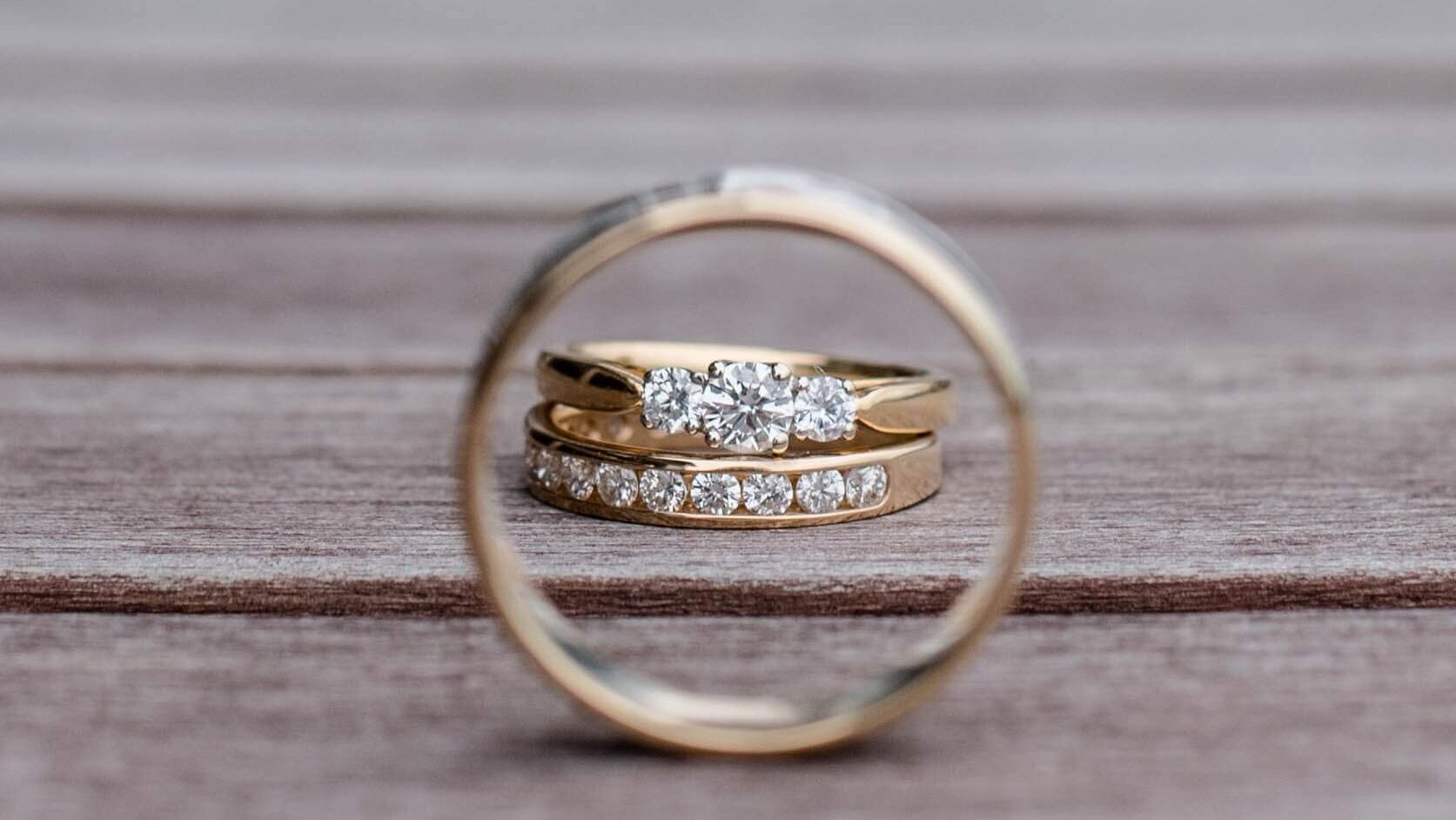
In a Word: Symbolic
While the simple, understated beauty of the diamond solitaire will never be unseated from the height of popularity among brides and grooms, the three stone setting is certainly a close runner-up.
Featuring a central diamond, flanked by two diamonds that are slightly smaller, or (more though less commonly) the same carat weight, this setting is more than the sum of its parts. Thought to the represent past, present and future of a couple’s love, it’s a truly romantic choice for any starry-eyed pair.
- The Bezel
In a Word: Modern
A total 180 on the usual settings used to hold the diamond on the shank, the bezel is about as ‘against the grain’ as any design could get. Rather than prongs or bars, the bezel surrounds the diamond in solid metal, typically a couple of millimeters thick, and slightly overlaps the edge of the diamond in order to stop it from going anywhere.
The most important thing to know about the bezel setting is the fact that it does impact the diamond’s ability to sparkle. Other settings, such as the prong, are specifically designed to encroach on the diamond as little as possible, while this one represents more of a feature in and of itself.
They create highly unique pieces, ideal for anyone who prefers to be a little different – and to do the unexpected.
- The Bar Setting
In a Word: Bold
A bar setting is featured along the shank, a little like a pavé or channel setting. The small, vertical bars that feature on either side of these tiny accent diamonds (what gives the setting its name) are there to hold them in place while leaving the top and bottom of each diamond exposed.
This ensures maximum light reaches the accent stones and a pretty modern look for any bride-to-be with more contemporary tastes.
- Butterfly Setting
For a more whimsical and delicate appearance, the butterfly setting adds a graceful touch. This setting features prongs that resemble butterfly wings, securing the diamond while offering a beautiful and feminine aesthetic.
- Celtic Irish Setting
For those looking to incorporate cultural significance, the Celtic Irish setting adds traditional motifs and symbols, often representing eternity, love, and faithfulness. This design is a stunning option for couples with Irish heritage or those drawn to meaningful designs.
- East to West Horizontal Setting
For a non-traditional and striking look, the East to West horizontal setting places the diamond sideways, offering a fresh and bold take on engagement rings. This unique orientation creates a modern statement piece.
Durable and Comfortable Engagement Ring Styles
Properly crafted, most engagement ring styles are very durable and comfortable to wear. A good jeweler will never let you pay for a vulnerable or weak design without first giving you a proper warning. Remember that gold and platinum are a lot stronger than a skinny band would suggest, and even the most delicate prongs are very secure.
That said, some designs are just a little more hardwearing than others, which is particularly useful if your partner has a busy, active lifestyle.
- The Split Shank
In a Word: Spacious
A split shank is pretty self-explanatory – rather than sitting on top of one solid band, the center setting is held by two bands, which join together at the inside of the finger. This gives the ring a wider base, and more surface area on which to add more design features, such as pavé.
If you needed another reason to check out the split shank setting, then we’ll clue you in on the fact that Beyoncé’s engagement ring features a split shank, embellished with pavé diamonds.
- The Channel Setting
In a Word: Secure
While the pavé and bar settings are among the most popular ways to embellish the shank, the channel setting has become highly popular for its security, durability, and ease of wear.
The jeweler cuts a narrow channel into the shank, with a tiny (though very important) groove capable of holding the diamonds in place, and making it basically impossible for them to slip out. Without prongs, the shank won’t catch on clothes or bedding, and with more coverage than the bar setting offers, the diamonds are more secure.
Importance of Choosing the Right Setting
These are some of the most popular ring settings, but in order to make the right decision, it’s important to look at the full spectrum.
Artisanal Craftsmanship and Custom Designs
It’s also important to note that you can combine multiple design elements together, such as cathedral and pavé, to create something perfectly suited to your partner’s tastes.
If you’re tempted to go down the customization route, the most important thing to remember is this: only a jeweler with many years’ worth of practical experience in the design and creation of fine jewelry will be able to guide you through the process.
Maybe you’ve got the ideas already – then again, maybe you haven’t. Either way, you’ll need to find a way to harness those raw concepts into something strong, beautiful, and unique.
As you can imagine, designing a ring from scratch takes a lot more time than purchasing one that has already been designed. Don’t leave this until the last minute, especially if you’ve got a particular day picked out for the proposal.
The Practicalities of Ring Selection
Take your mind off sparkle, shine, style and symbolism for a minute, and review some of the more practical factors involved in picking an engagement ring setting.
The Most Durable Setting
The bezel setting, although any well-crafted setting will last for decades if properly cared for.
Prongs are perfectly capable of holding a diamond in place, even if they look like they’re just barely pinching the narrow edge of the stone. This is part of the beauty – the ability to look delicate while exerting a great deal of strength on the diamond.
They can, however, occasionally snag on clothing, or work themselves loose over time. A trip to a jeweler once every twelve months will ensure they’re checked, and that they won’t suddenly fail you at the worst possible moment.
They also leave a significant amount of the diamond exposed – a big benefit if you’re looking for maximum light performance, but a worry if your bride-to-be follows a particularly active lifestyle.
If this is the case, we’d always recommend she take it off for any high-risk activities – but, if you think the bezel setting is up her street, this ensures a huge amount of protection for the diamond, and an additional line of defense against the setting failing.
High vs Low Settings and Snag-Free Designs
Prongs shouldn’t catch or snag and, if they do, you can take them to a jeweler to have any minor imperfections filed down. Some more prominent diamonds, such as those held on top of a cathedral, will take some getting used to. With time and wear, however, they will begin to feel more natural on the finger.
The bigger the diamond, the more it’s going to ‘stick out’. Those first few days after the proposal, your bride-to-be will no doubt be hyper-aware of her new ring; putting on a sweater, reaching down into her handbag, or even just running her fingers through her hair will definitely feel a little more difficult at first.
Still, hundreds of thousands of women wear their engagement rings every day and, after only a few days, it’s natural to get used to having it there.
Once again, however, if you find a particular prong is constantly snagging on loose threads and clothing, it’s worth taking it for a quick tune-up with a jeweler who is well-versed in ring-upkeep.
Comfort
Provided the ring fits her finger well, and any accent stones have been carefully placed so that they sit smoothly along the shank, any of the most popular engagement ring settings are comfortable to wear.
While it is possible to find bands that are not round, the overwhelming majority of designs available are perfect circles, designed to sit securely on the finger. It should be tight enough that it doesn’t ‘swivel’ wrong side up – or, of course, slide off – and loose enough that it doesn’t hurt to pull it over her knuckle or wear it for many hours each day.
Rings can be resized, but some settings (like the channel or the tension setting) make it much harder to do so.
For added comfort, you might want to opt for a half-pavé, which will leave the part of the band facing the palm smooth, although a well-made pavé setting won’t cause any discomfort.
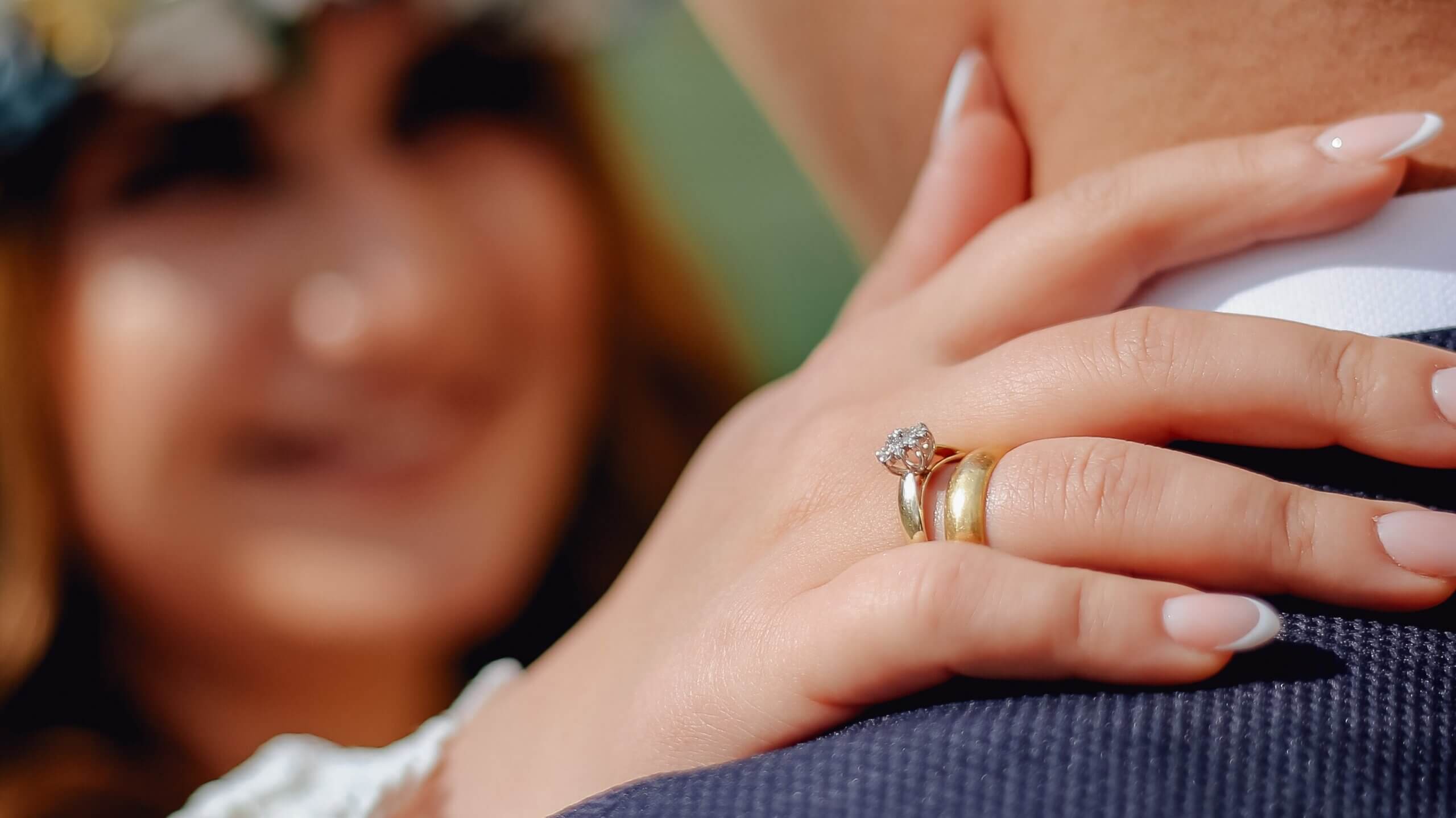
Maximizing Sparkle: Choosing the Right Setting for Your Diamond
While actually shopping for the diamond is a whole other story – one that begins over on our GIA Diamond Look Up, and ends with our online store – it’s important to consider what kind of diamond you’re looking for, and how your setting can complement its shape and size to the fullest.
The Best Setting for a Round Diamond
A four prong setting securing the diamond at the apex of an elegant cathedral setting will ensure that the diamond gets the very most light at all times – and, as a result, that the wearer always gets an unrivalled amount of sparkle.
You don’t have to know much about diamonds to know that the round diamond represents the most popular choice because of its unparalleled sparkle. While this is undoubtedly true, your ability to get the most out of the round cut depends on the setting you choose.
All settings interfere with sparkle to some extent since all settings have to touch the diamond and block some of it from the light.
Four prongs are your best bet, although a round cut will suit any setting. For a more modern look, consider the tension setting instead.
The Best Setting for a Square Diamond
A glittering halo is a great accompaniment to a square diamond, particularly if it follows a step cut (such as emerald or Asscher) since the extra diamonds will balance the subtler sparkle of the center stone.
All diamond cuts are highly versatile, and create highly unique designs with just the subtlest changes to the ring’s anatomy. A Princess Cut Solitaire, for instance, creates a striking impression without any extra embellishment, and an entirely different impression (though equally striking) in a bezel or tension setting.
The Best Setting for Sparkle
Again, a four prong setting will ensure maximum sparkle.
However, the answer to this question does depend on the type of sparkle you’re looking for. While a diamond solitaire enables the gemstone to be held in place while retaining as much of its natural sparkle as possible, other settings create more sparkle overall.
For instance, a cluster setting or side stone settingwill generate a massive amount of sparkle, although these flashes will behave a little differently – and in a way that many suppliers – us included – consider inferior.
The halo, coupled with a pavé shank – like this Rose Gold Oval Halo Ring – offers the perfect compromise here. By utilizing a large, center diamond and embellishing it with many, many smaller stones, you’ll be able to get the best of both worlds.
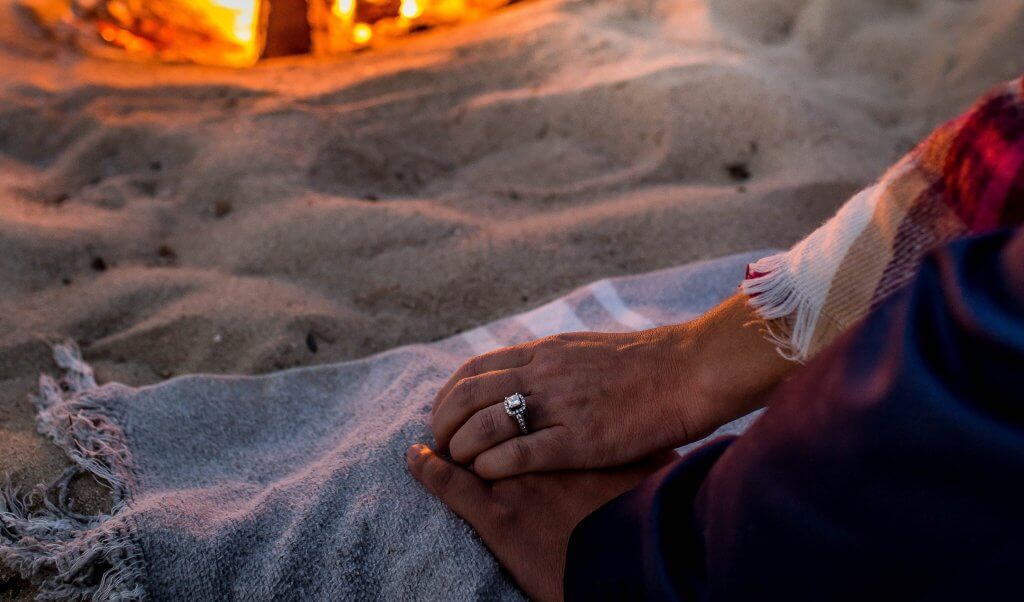
Also, remember what we said about that hidden halo? Allowing your diamond to draw in even more light from a greater number of angles (in this case, from beneath) means an even more complex light performance for you and its wearer to enjoy.
Choosing Between Gold, Platinum and Other Metals
In addition to being beautiful, the right metal will be strong enough to look after your diamond, easy to maintain and capable of withstanding many years of wear.
What Are Precious Metals?
Rare, natural, beautiful, and highly valuable, precious metals include gold, platinum, silver, and palladium.
Platinum is naturally strong and will last for decades on the finger. Gold, on the other hand, is made strong. From the ground, it is far too soft to be used in jewelry. First, it needs to be alloyed (mixed) with strengthening metals, which will lower the karat of the gold while making it strong enough to be worn on the finger.
This is why 18 karat will most commonly be on offer– it is close to pure (24k gold = pure), but much, much stronger.
Some buyers wonder about sterling silver (that is, silver that has been alloyed for strength), but this metal doesn’t offer the durability of a platinum or 18k gold ring and is not advisable for your engagement ring.
White gold, like platinum, can create a highly reflective setting capable of reflecting more light into your diamond and making it look bigger and more sparkly.
For this effect, a higher karat white gold – ideally, 18k – will do the most for your diamond.
Still, there is something incredibly enticing about the contrast created between a diamond and a warmer hued metal like yellow or rose gold.
What’s more, yellow gold is a much more traditional choice. It has stood as a symbol of enduring love for thousands of years and represents the number one choice for anyone looking to create a more traditional piece for their bride-to-be. Jewelers only figured out how to use platinum in jewelry in the late 1800s – much more recently than gold.
Discovering Your Ideal Ring Style
So, you’ve made it this far – and, while you’re (hopefully) a little wiser to the differences between the most popular engagement ring settings, you’re probably still totally in the dark about how to apply this knowledge to your partner
Picking anything for someone else is pretty tricky, but nothing puts you under more pressure than picking out an engagement ring for the love of your life. Not only does it have to be beautiful enough to convince her to say yes (although here’s hoping you’re enough to sweeten that deal on your own) but it also has to be something that she is excited to wear day in, and day out, for the rest of her life.
The Most Popular Engagement Ring Setting
Over the past century, the diamond solitaire has always remained the top choice for proposals. Still, in recent years the halo, pavé and cathedral have risen to the height of popularity.
With a beautiful diamond at its center, a solitaire engagement ring will never go out of style, or fail to dazzle her when you draw back the lid of that ring box.
Nevertheless, one of the biggest engagement ring trends of 2021 falls in favor of those little details, and how they can be used to create something entirely unique. The hidden halo, for instance, means that the ring will charm from every angle without losing the simple, understated look of the diamond solitaire from above.
Don’t feel compelled to embrace the intricate details, and to pack as many accent stones and embellishments onto that ring just because. Remember that the diamond will do all the talking and that even the plainest diamond rings look truly spectacular for that reason alone.
It’s all about knowing your bride-to-be. Figure out whether her style is more understated and modern, or a little more ‘out there’, then work from there.
Figuring Out What Kind of Ring She Likes
Talk to her friends and family, take a look at the styles of rings she frequently wears or keeps in her jewelry box, pay close attention when she talks about friends’ engagement rings (does she like them, or just one particular feature?) and, of course, start putting her style into words.
We go into this in much more detail in our guide to finding the perfect ring for her but suffice to say that there are many, many avenues to explore – and that’s before you consider the fact that she might want to have an open conversation about it.
Chances are, she’s dropped at least a couple hints in the past – that, or you’ll be able to gauge where she stands on the ‘surprise’ vs ‘no surprise’ debate by talking to her mom, sister, or best friend.
But, even if you can’t extract many details from the people around you, your best port of call will be searching the online store. Provided you feel confident that you understand your partner’s taste, there will be plenty of options that you can start with.
Our Expert Take
For the classics at heart, our favourite would have to be the diamond solitaire, but other settings are capable of offering the perfect modifications to this traditional shape for anyone looking to introduce more sparkle, a sense of modernity, or even a more antiquated look into their ring.
The best ring setting will obviously be the one that appeals to your partner’s unique tastes, fashion sense and, of course, her own expectations of what will be waiting for her inside that ring box. For you, this means that the best ring setting will be the one that you researched, felt inexplicably drawn to, and cherry-picked with her at the front of your mind.
In a more practical sense, it will be one that has been designed and hand-made by a jeweler who has spent years honing their craft, and who is truly dedicated to the process of making a unique, strong, high quality and irreplaceable ring for your partner to wear for the rest of her life. This is the type of jeweler we work with, ensuring your ring is of the best quality so that your decision is a success, no matter what you choose.
There’s no need to feel overwhelmed by this part of the process; with research and time, the perfect choice will jump out at you, and, after that, you won’t need to look back.
10 FAQs
- Q: What is the most secure setting for an engagement ring?
A: The bezel setting is considered one of the most secure as it fully encloses the diamond. Channel and flush settings are also known for their security. - Q: Can engagement ring settings be changed after purchase?
A: Yes, many engagement ring settings can be changed, but the ease and cost depend on the ring’s design and construction. Some settings, like tension settings, are more challenging to modify. - Q: Do certain ring settings make diamonds look larger?
A: Yes, halo settings, where smaller diamonds encircle the main stone, can make the center diamond appear larger and more prominent. - Q: What’s the best setting for a diamond with high brilliance?
A: A prong setting, especially a four or six-prong arrangement, is ideal for maximizing the brilliance of a diamond, as it allows ample light to enter the stone. - Q: Are some ring settings more prone to snagging on clothing?
A: Yes, settings with higher profiles or protruding prongs, like certain cathedral or prong settings, can catch on fabrics more easily compared to bezel or channel settings. - Q: How do I choose a setting that matches my partner’s lifestyle?
A: Consider a setting that aligns with their daily activities. For active lifestyles, opt for secure and lower-profile settings like bezel or flush settings. - Q: Is it more expensive to have a custom ring setting made?
A: Custom settings can be more expensive due to the additional labor and craftsmanship involved. However, the price varies depending on the complexity and materials used. - Q: How often should a ring setting be checked for maintenance?
A: It’s advisable to have the setting checked by a professional jeweler at least once a year to ensure the prongs are secure and the stone is not loose. - Q: What’s the difference between a solitaire and a halo ring setting?
A: A solitaire setting features a single diamond, focusing on simplicity, while a halo setting surrounds the central diamond with smaller stones for added sparkle and size. - Q: Which metal is best for ring settings?
A: Platinum is durable and holds diamonds securely, but it’s heavier and more expensive. Gold, available in various hues, is a popular and versatile choice.
Dive into the world of bespoke elegance with Jeweler AI. Discover your dream engagement ring setting today!
FOLLOW-UP GUIDE SERIES





